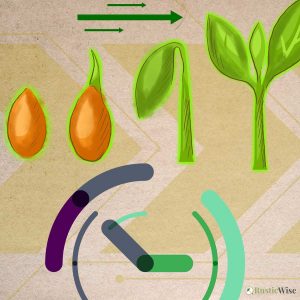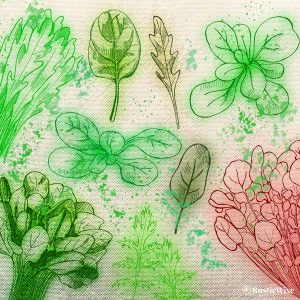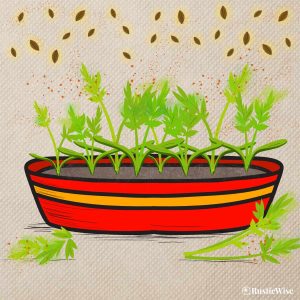Cabbage Microgreens: Tiny Greens With Big Health Benefits
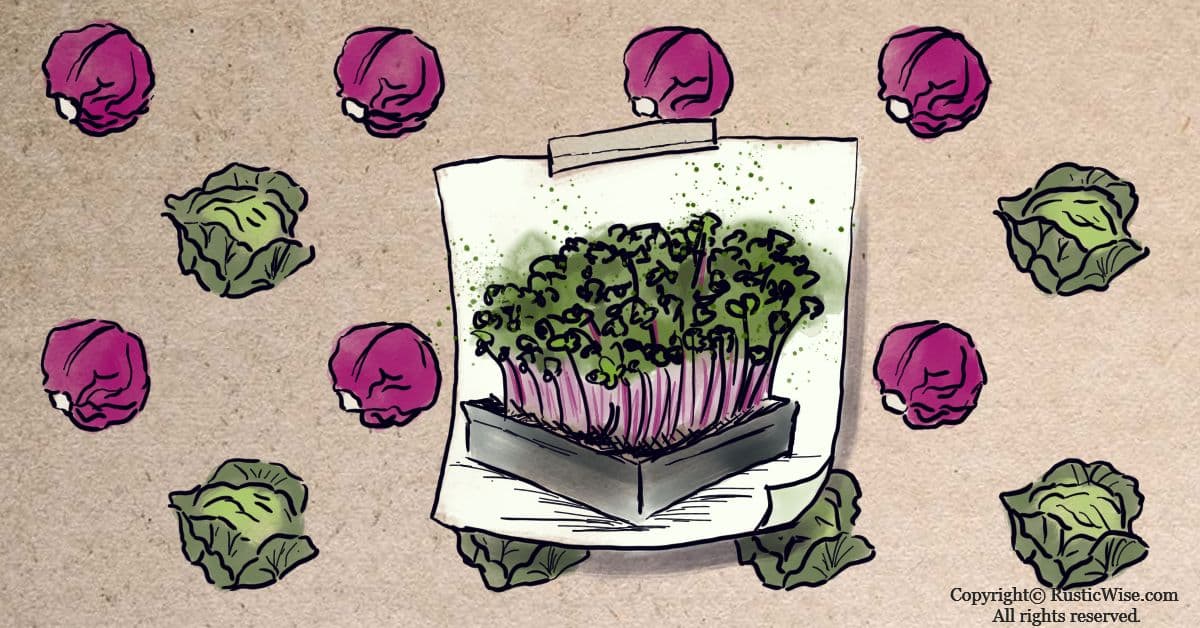
Cabbage microgreens are tiny green leaves that pack a big punch. Packed with vitamins A, C, and K, these greens are tasty and crunchy as well as gorgeous to look at throughout the growing process. Red cabbage microgreens are a popular variety to grow with their dark-green leaves and reddish-purple stems. Unlike regular cabbage that requires ample space and time to grow, you can harvest cabbage microgreens anywhere from 5–14 days. Plus, you can grow them on your countertop!
In this article, we’ll cover everything you need to know about cabbage microgreens: how to grow them indoors, what to do with cabbage microgreens (and what they taste like!), as well as health and nutrition benefits.
Cabbages are members of the Brassica oleracea family. Other veggies belong to this group include broccoli, Brussels sprouts, and cauliflower.
What are cabbage microgreens?
Microgreens are the tiny shoots of a young plant. They’re grown in soil, or a soilless growing medium such as coconut coir. They are harvested when only a few inches tall. Microgreens contain the cotyledons which are the seed leaves of a plant. The cotyledons are packed with vital nutrients from the seed.
Unlike sprouts which are eaten whole (seed, root, and shoot), microgreens are harvested just above the soil line.
Cabbage microgreens are essentially the tiniest plants grown using cabbage seeds. They’re a type of edible leafy green that’s grown from seed to harvest in less than two weeks. While there are many varieties of cabbages available, red cabbage seed is a popular microgreens choice, both for its looks and nutritional content.
What’s so special about red cabbage?
Red cabbage (sometimes referred to as purple cabbage) has more nutrients than typical white or green varieties. This is mainly due to the color pigmentation of red cabbage, which adds a number of benefits.
Red cabbage contains higher levels of vitamin C, carotenoids, and flavonoid antioxidants than green cabbage varieties. Studies show that red cabbage contains 4.5 times the amount of antioxidants than its green counterparts.
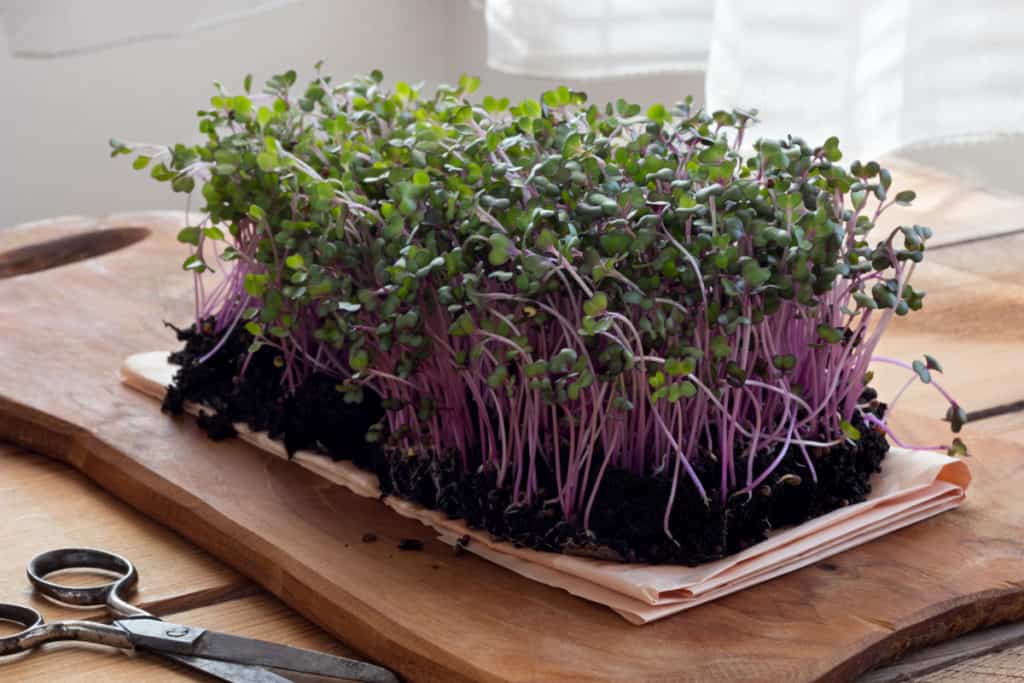
Credit: Yay Images
Nutritional and health benefits of cabbage
Cabbages have been cultivated for centuries for their nutritional content. Plus they have versatile uses in the kitchen too, from cabbage rolls to cabbage soup.
Here’s a nutritional breakdown of cabbage vs. red cabbage for 1 cup (89 grams) of chopped raw cabbage.
Table: Cabbage and red cabbage nutrition
| Per 1 cup, chopped (89 grams) | Cabbage | Red Cabbage |
|---|---|---|
| Calories | 22 calories | 28 calories |
| Protein | 1.1 gram | 1 gram |
| Carbs | 5.2 grams | 7 grams |
| Fiber | 2.2 grams | 2 grams |
| Vitamin C | 36% of the Daily Value (DV) | 56% of the Daily Value (DV) |
| Vitamin K | 56% of the DV | 28% of the DV |
| Vitamin B6 | 6% of the DV | 11% of the DV |
| Vitamin A | 3% of the DV | 6% of the DV |
| Potassium | 3% of the DV | 5% of the DV |
| Thiamine | 5% of the DV | 5% of the DV |
| Riboflavin | 3% of the DV | 5% of the DV |
| Vitamin E | 1% of the DV | 1% of the DV |
- Rich in antioxidants and minerals: Packed with vitamins A, C, and E, beta-carotenes, potassium and iron. Cabbage has especially high levels of vitamin K which helps to heal wounds (blood clotting), and supports bone health. Cabbage is also rich in vitamin C, which helps to fight against free radicals and cancer.
- May help with inflammation: Veggies belonging to the Cruciferous family contain powerful antioxidants that help reduce chronic inflammation. This includes diseases such as arthritis, heart disease, and inflammatory bowel disease.
- Good for digestion: This fiber-rich veggie helps with digestion and contains both soluble and insoluble fiber.
- May lower cholesterol levels: Found to decrease LDL cholesterol levels which is the “bad” type of cholesterol.
- Promotes a healthy heart: Anthocyanin is the natural compound which gives red/purple cabbage its color. It’s also found in other colorful fruits such as grapes and blueberries. Eating foods rich in anthocyanin has been found to prevent heart disease.
And if this isn’t enough to convince you to eat cabbage, cabbage microgreens are even healthier than mature cabbage. Microgreens in general, have been found to contain about five times the amount of vitamins and carotenoids than the same leaves of the same mature plant.
A study by the USDA Agricultural Research Service (ARS) found that some microgreens are even healthier than others. Of 25 microgreens varieties tested, red cabbage (along with cilantro, garnet amaranth, and green daikon radish) has the highest concentration of vitamins C, E, and K, as well as carotenoids.
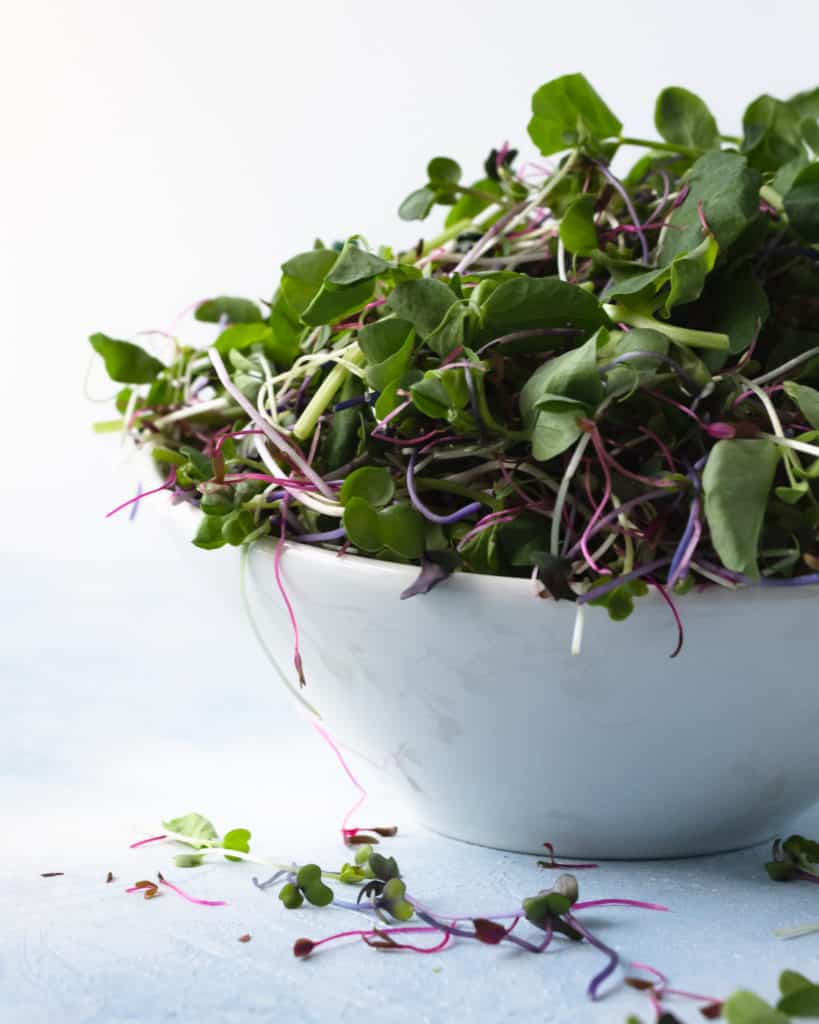
How do you grow cabbage microgreens?
There are so many benefits of growing cabbage microgreens yourself. Not only are you adding a tasty and nutrient-rich type of leafy green to your diet, you’re also getting fresh and organic produce, year-round! Cabbage microgreens are easy to grow indoors in just about any container with soil (or a growing medium). You can harvest them any time from 5–14 days from planting.
Tip: Cabbage likes sun. After the initial blackout phase, you’ll need to place your microgreens on a sunny windowsill. If you don’t receive enough natural sunlight, consider using artificial lights. Most varieties of cabbage microgreen seeds do not require soaking.
Let’s round up a few supplies:
- Potting soil: Select organic soil free of chemicals. If you have organic compost, this would be great to incorporate into the soil for a nutrient boost. (You could also try using other planting mediums, such as coconut coir or hemp mats.)
- Cabbage seeds: You can buy cabbage seeds for microgreens online, or at your local specialty food or gardening store. Seeds should be untreated. Seeds specific to sprouting and microgreens are high-germination seeds.
- Growing tray and cover: You can buy growing trays, or use a variety of shallow containers you have at home such as pie tins, aluminum casserole containers, takeout containers. If you’re upcycling/reusing containers around the house, just remember to poke a few holes for drainage.
- Water mister: Use clean water of drinking quality. Depending on your local water quality, tap water may be fine for some people. For others, tap water is full of contaminants in which case its recommended you use bottled or distilled water.
The following instructions are just a general guideline. Every cabbage variety may differ slightly. For best results, follow the instructions on your seed packet.
Use roughly 1 ounce (28 grams) of seed per each 10 X 20 inch grow tray.
- Prepare soil. Remove any debris, or rocks from the soil. Fill your growing tray with soil and pat down gently. Use your water mister to evenly moisten the soil. Ensure the soil is moist, but not overly wet.
- Sow seeds. Spread seeds densely and evenly across the top of the soil. Press the seeds down gently with your hands, or use a small piece of cardboard. (Optional: some people like to cover their seeds with a very thin layer of soil, but normally we skip this part. If you prefer to sow seeds directly on top of soil, this is fine too.)
- Mist with water. Once your growing tray is covered with cabbage seeds, give it one more mist with water.
- Replace cover. Now place your cover on top. This is to keep the sunlight out and the moisture in. Place your tray in a dark place at room temperature. During this blackout period, the seeds are busy growing! Keep covered for 3 days. Continue to mist once or twice a day as needed. Remember to replace the cover each time.
- On the fourth or fifth day, or when you see the cotyledons (first seed leaves) emerge, remove the cover and place in a sunny windowsill, but away from direct sunlight. (Optional: True Leaf Market suggests placing your cover upside down directly on top of your microgreens on days 4–5. This creates a gentle pressure and slight stress on the plants to encourage strong, healthy growth).
- Mist or water periodically to ensure soil stays moist. When watering your microgreens, try to avoid getting the leaves and shoots overly wet to prevent mold problems. If you have a tray with drainage holes, you can bottom water by filling an empty tray with a bit of water, and placing your microgreens tray on top, so it can soak up water slowly.
- Harvest anytime between days 5–14, or when cabbage microgreens are between 1–3 inches tall (3–8 centimeters). You can taste microgreens as they’re growing and harvest to your taste preference. To harvest, just snip above the soil line with a sharp pair of scissors.
Harvest just before you plan to eat your cabbage microgreens, and give it a quick rinse first. Keep microgreens loosely wrapped in a paper towel and place in a plastic bag or container in the fridge for up to one week. Like other fresh microgreens or sprouts, these baby plants taste best when eaten within two or three days.
What do cabbage microgreens taste like?
Cabbage microgreens taste like a cross between cabbage and spinach, but more delicate. Sometimes you can detect a hint of broccoli (which isn’t too surprising as both cabbage and broccoli are Brassicas). The flavor of cabbage microgreens varies depending on the variety: some varieties are spicy with an earthy aroma while others are milder and sweeter.
The leaves are tender and flavorful, making them perfect for salads, sandwiches, or wraps. You can also add them to soups or stir fry for an extra boost of flavor. Use them as a garnish for pizza, omelettes, or frittatas.
Cabbage microgreens are a great way to add flavor and nutrition to your diet. With its versatile flavor, it adds pizzazz to any savory dish!

Author: Theresa Tesolin
Theresa is co-founder of RusticWise. She helps people unleash their inner DIY spirit by encouraging them to get dirty and make or grow something from scratch.



